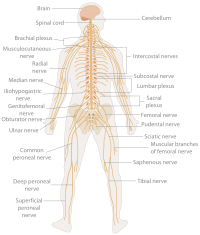
Photo from wikipedia
Abstract Deformable optical mirrors usually play key roles in aerospace and optical structural systems applied to space telescopes, radars, solar collectors, communication antennas, etc. Limited by the payload capacity of… Click to show full abstract
Abstract Deformable optical mirrors usually play key roles in aerospace and optical structural systems applied to space telescopes, radars, solar collectors, communication antennas, etc. Limited by the payload capacity of current launch vehicles, the deformable mirrors should be lightweight and are generally made of ultra-thin plates or even membranes. These plate/membrane mirrors are susceptible to external excitations and this may lead to surface inaccuracy and jeopardize relevant working performance. In order to investigate the modal vibration characteristics of the mirror, a piezoelectric layer is fully laminated on its non-reflective side to serve as sensors. The piezoelectric layer is segmented into infinitesimal elements so that microscopic distributed sensing signals can be explored. In this paper, the deformable mirror is modeled as a pre-tensioned plate and membrane respectively and sensing signal distributions of the two models are compared. Different pre-tensioning forces are also applied to reveal the tension effects on the mode shape and sensing signals of the mirror. Analytical results in this study could be used as guideline of optimal sensor/actuator placement for deformable space mirrors.
Journal Title: Mechanical Systems and Signal Processing
Year Published: 2017
Link to full text (if available)
Share on Social Media: Sign Up to like & get
recommendations!